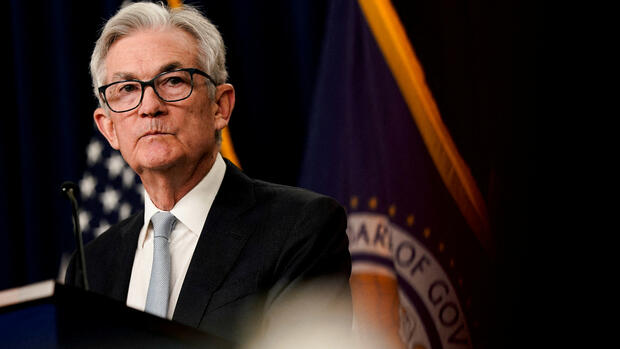Denver Rising prices for gasoline and airline tickets have caused inflation in the USA to rise again. In August The US inflation rate was 3.7 percent compared to the previous year – even higher than analysts had expected. In July the value was 3.2 percent. Core inflation, which excludes volatile energy and food prices, fell from 4.7 to 4.3 percent.
This brings the US Federal Reserve (Fed) back into focus. Economists expect the Fed to keep interest rates stable at its meeting on September 20th. The monetary authorities had raised interest rates at eleven of the last twelve meetings. They are now in a range of 5.25 to 5.5 percent – the highest level in 22 years. Monetary policymakers are placing greater emphasis on core inflation because it provides a better indication of long-term inflation trends.
Price drivers last month were primarily rising energy prices, which was also noticeable at gas stations. Gasoline prices rose by 10.6 percent in August compared to the previous month. Such a significant increase “is bitter because all consumers feel it,” says Tom Lee from the analysis house Fundstrat.
Gasoline prices were responsible for a good half of the price increases. Airline tickets also became more expensive again. On a monthly basis, inflation rose by 0.6 percent and core inflation by 0.3 percent. However, the costs of living space, also an important element in calculating the inflation rate, rose only moderately.
Uncertainty about further interest rate developments
At the major central bank meeting in Jackson Hole at the end of August, Fed Chairman Jerome Powell remained open about whether he would raise interest rates again in the winter. Market participants hope that the end of the interest rate hikes has come. However, this is not certain, as capital market expert Mohamed El-Erian points out. He assumes that the Fed will keep interest rates constant next week. But Wednesday’s data “leads to some uncertainty ahead of the upcoming meeting on November 1st,” El-Erian said.
Gasoline prices were responsible for a good half of the price increases in the USA.
(Photo: Unsplash)
He assumes that inflation in the USA could rise further in the coming months, driven, among other things, by further rising prices for oil and some food products. Therefore, it could be that the inflation rate “stays at three to four percent and is therefore permanently above the Fed’s inflation target of two percent.”
Delicate decision
The Fed would then be faced with a particularly delicate decision: “Either it tolerates higher inflation or it pursues the two percent target with further interest rate increases – thereby increasing the risk of a recession and new turbulence on the financial markets,” said El-Erian.
Many monetary authorities have also recently adopted a more cautious tone. For a long time they agreed that they would rather raise interest rates too much than too little in the fight against high inflation.
But now that the inflation rate has fallen significantly from 9.1 percent last June, they are changing their stance. “In today’s complex economic environment, returning inflation to 2 percent will require a carefully calibrated approach, not endless buckets of cold water,” said Lorie Logan, head of the regional Fed in Dallas.
The US economy has recently sent mixed signals. Growth may have accelerated in the third quarter, which runs through the end of September. Stephen Stanley, chief economist at Santander Capital Markets, expects annualized growth of 3.7 percent. This is well above the Fed’s forecasts, which could now raise them.
At the same time, the labor market has weakened – a development that could accelerate further in the coming months, believes the chief economist of the financial investor Apollo, Torsten Slok. “There are fewer vacancies, weekly working hours are shorter, and the termination rate is lower,” says Slok.
Effect only with a time delay
Employees who change jobs also have to expect fewer wage increases than just a few months ago. Interest rate increases generally take twelve to 18 months to have their full impact on the real economy. Slok expects the Fed to keep interest rates high until the second half of next year. Therefore, “economic data will continue to weaken as the Fed’s interest rate hikes increasingly weigh on consumers and businesses.”
Consumers, the most important driver of the economy, are increasingly suffering from high prices. Default rates on credit cards and car loans are rising. At the same time, access to credit is becoming more difficult and incomes are growing more slowly, according to a New York Fed consumer survey released Monday.
Given the uncertain outlook, Jamie Dimon, CEO of America’s largest bank JP Morgan Chase, warned Tuesday that it would be “a big mistake” to trust that consumers will drive economic growth well into the future.
Investors quickly shrugged off the inflation data. At the start of trading in New York, the leading index Dow Jones was up 0.3 percent. The broad S&P 500 index gained 0.1 percent and the tech-heavy Nasdaq rose 0.3 percent.
More: Professional investors are switching
